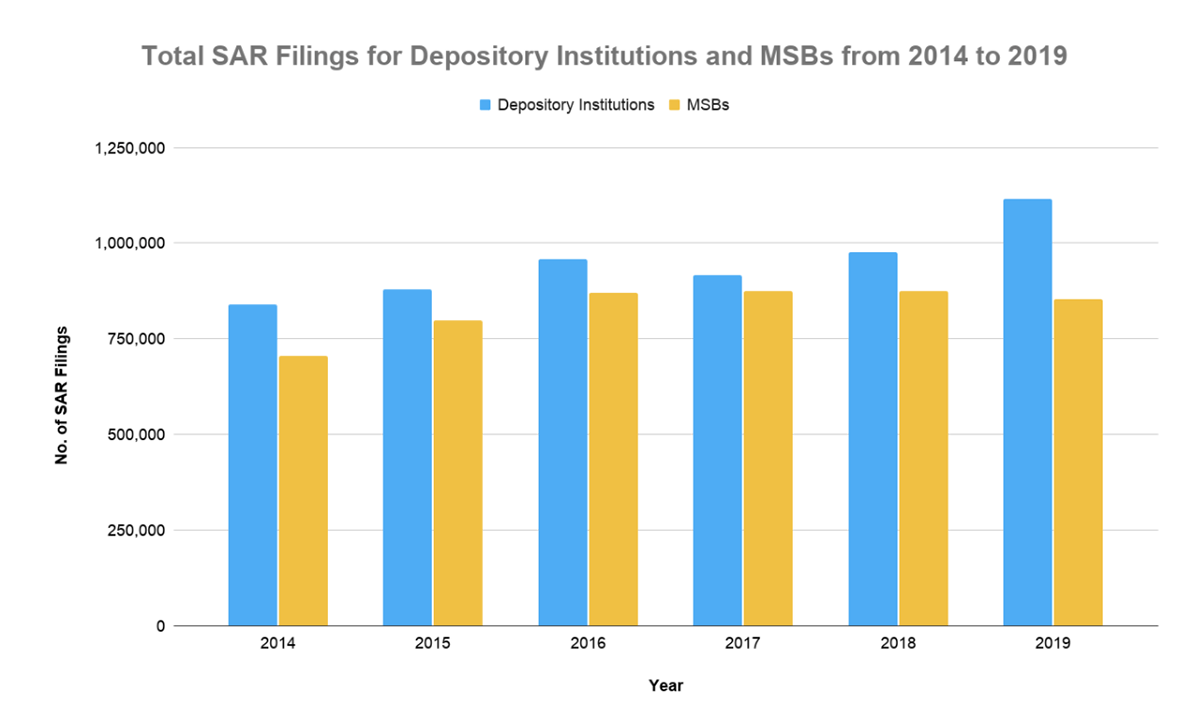Regulators and law enforcement have made it clear — financial institutions (FI) must do more to enable investigators to craft more useful Suspicious Activity Reports (SARs). Data from public records enhanced using automated graph technology can transform AML/financial crime investigations and suspicious activity reporting, speeding up the process and enhancing context for more useful narratives.
SAR filings on the rise
The overall number of SARs filed with FINCEN has continued to increase in recent years. Between 2014 and 2019, SAR filings from depository institutions increased by 33 percent, according to FINCEN. The number of SAR filings for money services businesses (MSBs) during the same period increased by about 21 percent.

Source: FINCEN
While not the only entities required to file SARs, depository institutions and MSBs make up the bulk of total SAR filings. In 2019 alone, depository institutions submitted more than 1 million SARs to FINCEN.
Context drives more effective investigations
Federal, state, and local law enforcement and policymakers heavily leverage information included in SARs. With FinCEN’s recent Advanced Notice of Proposed Rulemaking focused on the need for more effective AML programs, including more useful SARs, it is more important than ever for FIs to ensure they have access to robust data and technology to help them conduct better investigations and craft better SARs. Public records along with graph technology play a critical role in facilitating faster, more effective investigations.
Graph technology automatically connects the dots across disparate data sources, which can be particularly useful when used to map ownership and control relationships. Otherwise hidden relationships are automatically illuminated, creating networks of relationships that can simply add additional detail or completely transform the investigator’s understanding of the subject(s) and nature of activity.
This connected network view can also assist law enforcement in identifying additional subjects of interest and emerging typologies. Furthermore, contextual information sourced from public records can be corroborated with information obtained from cooperating witnesses, or other forms of non-public information.
Graph technology also allows for varying levels of detail and nuance depending on an FI’s particular risk appetite. Investigators can adjust what data they see based on the number of degrees removed from their customer or subject of interest, thus further enhancing the investigator’s overall understanding of the activity in question and allowing for more detailed SAR narratives for law enforcement.
Finally, different visualizations of networks created using graph technology allow investigators to process the information differently and draw unique conclusions. For example, investigators can use a graph view to map all connections of one focal entity to gain an understanding of its entire global network. Or they could also use the technology to create a hierarchical view to better understand status or authority among a related group of entities.